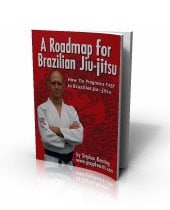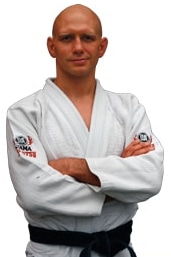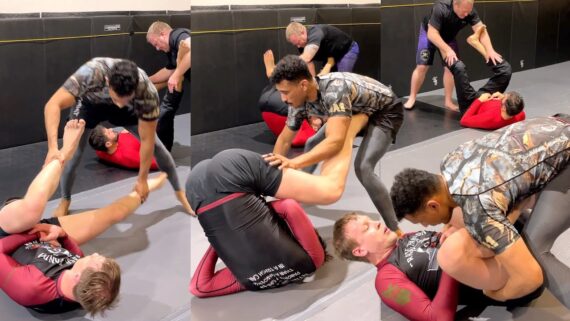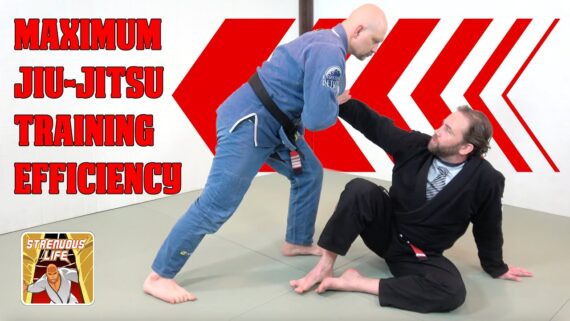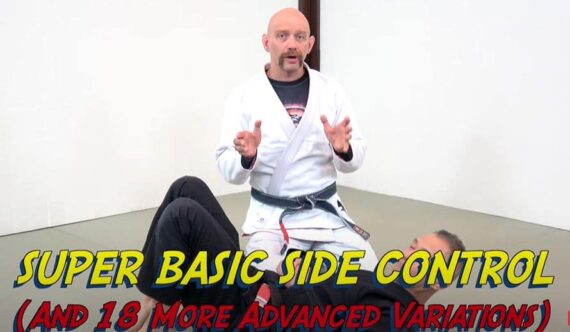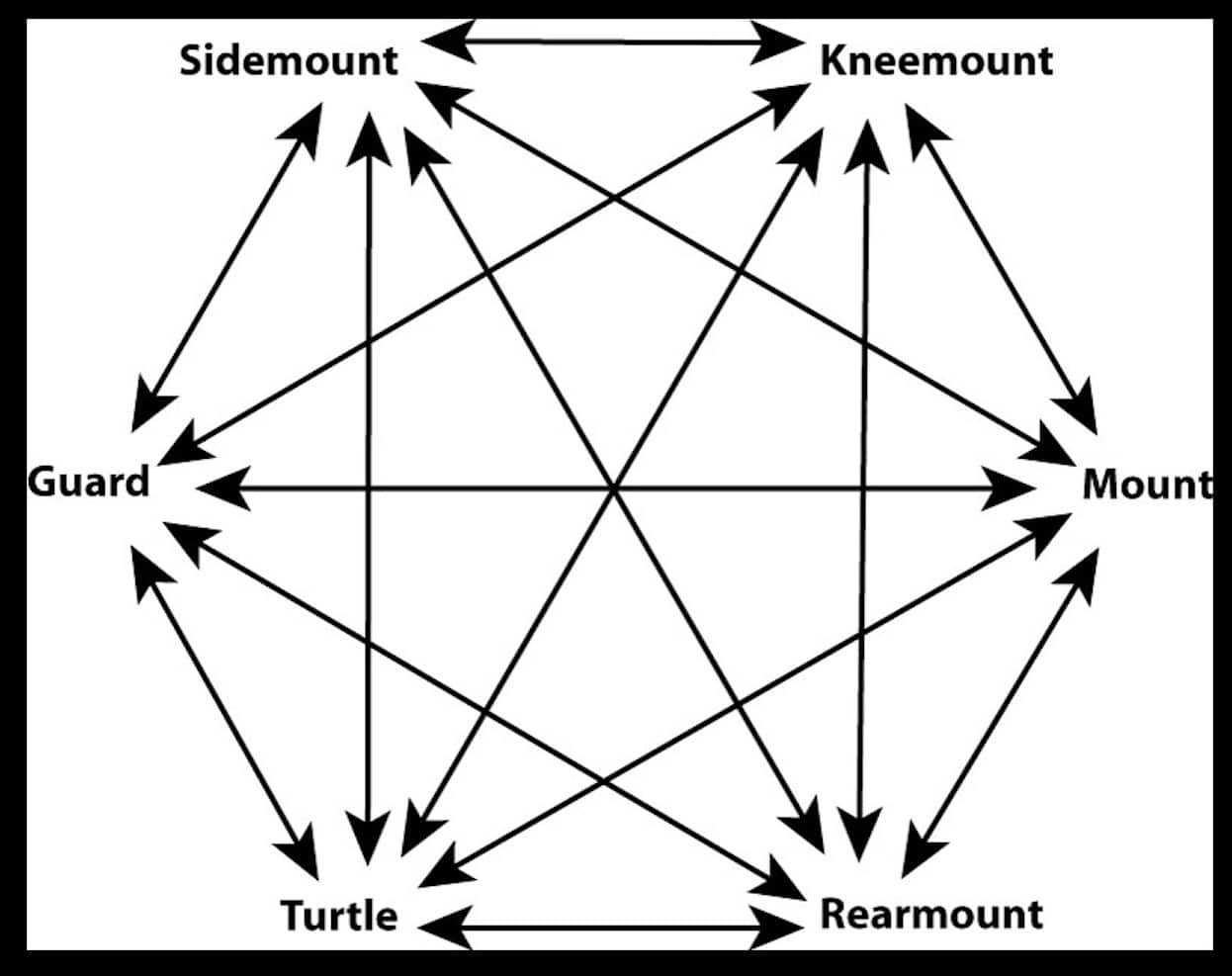
I recently rolled with a young punk who was strong as a chimpanzee and flexible as an octopus.
Not only was he a physical specimen, but – to make matters worse – he also had some really good attack sequences.
For example, every time he got the overhook from closed guard I was fending off a barrage of triangles, omoplatas, baratoplatas, and weird-ass backtakes. And when he got to my back he was a nightmare.
Fortunately I used old man sneakiness to weasel out of the bad positions and catch him in a few chokes and armlocks along the way.
It wasn’t techniques that saved my butt that day. It was what I call “positional wisdom.”
Which is to say, I was able to take advantage of the little mistakes he made in his positioning.
For example, he left too much room between his elbow and his hip in one position… and was just a bit too willing to concede certain top positions… and didn’t have good answers for positions that were halfway between other positions… and so on.
None of these knowledge gaps were his fault. He’s a young punk after all, and if he keeps training then in a year’s time he’ll be an absolute monster.
Positional wisdom is the depth of knowledge and your ability to make good judgements in a given position.
It’s the ability to make little micro-adjustments with your hips to shut down an escape attempt… It’s quickly distinguishing between genuine threats and meaningless distractions… It’s knowing what the next move is likely to be and what to do about it.
One way you can develop positional wisdom is by sheer volume of time on the mats.
If you rolll many times a week for many years then you’ll (probably) develop positional wisdom for most of the common situations on th mat.
But that accumulation of knowledge and muscle memory can be speeded up…
Another way is by using BJJ instructionals.
A well done instructional is a brain dump of someone’s accumulated knowlege in a specific area for you to absorb.
An instructional should include a whole bunch of do’s and don’ts that’ll accelerate your learning.
Gamified learning is another way to accelerate your accumulation of positional wisdom.
Think of it this way…
Wisdom comes from experience, and experience comes from making mistakes. So you want to make as many mistakes as possible.
The problem is that making a mistake in regular training often brings your learning to a screeching halt.
For example, if you screw up a guard sweep in sparring then you might spend rest of the round on the bottom of side control eating a crossface. At that point you might get better at surviving getting crushed but you’re not going to get better at guard sweeps.
Gamified training reduces to the cost of failure so you can make lots of mistakes, explore lots of rabbit holes, and accumulate positional knowledge much faster.
(BTW the two best resources on gamified jiu-jitsu training that I know of are BJJ Foundations and BJJ Games.)
Good luck improving your positional wisdom in as many different positions as possible.
Stephan Kesting
Related Resources
No Hands Guard Drill
The No Hands Guard Drill is one of the very best ways to develop leg dexterity and guard retention in jiu-jitsu. It’s also a great way to continue training and making progress if you have an elbow or shoulder injury that makes regular sparring difficult.
Here’s a video from BJJ Games breaking down the No Hands Guard Drill for you: live footage of the drill in action begins at 5:01…
Click here to check out the No Hands Guard drill.
Training to Get Maximum Results from Your BJJ Training in Minimum Time
The traditional class structure of doing a warmup, learning a couple of new techniques, and followed by sparring is NOT an efficient way to learn jiu-jitsu. We can do much better if we use insights from research on coaching and learning.
In episode 397 of The Strenuous Life Podcast I talk with BJJ black belt Cal MacDonald about applying advances in sports and coaching science to the learning of jiu-jitsu.
Click here to check out the episode
Super Basic Side Control (and 18 Advanced Variations)
Side control is a pinning position in Brazilian jiu-jitsu when you’re perpendicular to your opponent and are not entangled in their legs. Typically but not always you’re chest to chest with your opponent. It is one of the 6 main positions in BJJ and it’s where you end up most often after passing the guard.
But there isn’t just one perfect version of side control. Depending on what you’re trying to set up and depending on how your opponent is trying to escape you can have your arms, legs, hips and body in a number of different positions, each with its own advantages and disadvantages…
Click here for the full side control breakdown.
BJJ Newsletter
Sign up for my completely free email newsletter! This consists of a series of email lessons that you will receive every couple of days. These email lessons are also 100% FREE – you will never be charged for them.
Below are a just a few topics that are covered in this free online course. Most are applicable to any kind of ground fighting, whether you do BJJ, submission grappling, MMA, Judo, etc.
- The guard posture mistakes that’ll get you killed on the mats,
- The six positions you must know in groundfighting
- The biggest mistake people make with their chokes
- How NOT to do the closed guard (and how to correctly transition to the open guard)
- How to stay injury free in a highly physical sport,
- The seven things every blue belt must know,
- Why talent is totally overrated in BJJ
- How to triple your endurance on the ground,
- And a ton more.
To receive my free BJJ emails and get a free copy of The Roadmap for BJJ Book enter your best email in the box below and hit the red button.

